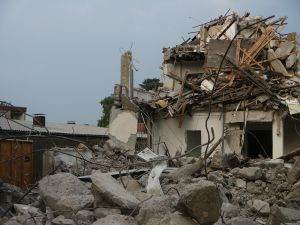In a time of sustainable building we often look to reduce, reuse and recycle to keep the health of our environment. This bodes especially true when we are talking about the most used man-made material in the world; Concrete.
However, in reaching for sustainability we mustn’t sacrifice the durability of our structures. For concrete to be sustainable we must first build durable structures. In assessing sustainability in our structures we cannot say all of the durable structures are sustainable; however, we can say all of the sustainable structures are durable. Thus, as sustainability is the goal, durability must be our primary plateau.
For instance, when structures made of concrete are demolished or renovated in some capacity, recycling the concrete is far more environmentally useful than sending it to landfills for disposal. This method of recycling concrete is a more attractive option in this day of greater environmental awareness, as it saves space in landfills, reduces gravel mining, is readily available and cost effective, and reduces the pollution involved in trucking materials.
The procedure of obtaining recycled aggregate involves:
- Breaking up and removing the old concrete
- Crushing in primary and secondary crushers
- Removing reinforcing steel and other embedded items
- Grading and washing
- Finally stockpiling the resulting coarse and fine aggregate
Recycled aggregate must be free of foreign materials, such as external membrane material. One of the great aspects regarding Kryton’s Krystol technology is that it allows the concrete to be recycled at the end of life, unlike that of external membranes.
Unfortunately, as in many circumstances of environmental friendliness, there are some drawbacks associated with using recycled concrete within a concrete mixture. The use of recycled concrete aggregates can lessen the durability of the concrete being used if too much is used, which, in the end, will negatively affect the lifespan of the concrete structure. Furthermore, as cited in ‘Construction and Building Materials’ by Roz-Ud-Din Nassar and Parviz Soroushian, recycled aggregate absorbs more water (two to three times as much) and causes increased shrinkage.
However, if the optimum amount of recycled aggregate is used where no negative effects on concrete durability is seen, then concrete sustainability rises. Concrete trial mixtures should be made to extensively test proper mix proportions because of the variability properties with the old concrete, ensuring the highest quality and most durable concrete possible, along with constant monitoring.
In the end, if we use the optimal amount within a concrete mixture we can help the environment by reducing the need to use virgin aggregate by reusing concrete as recycled aggregate.





